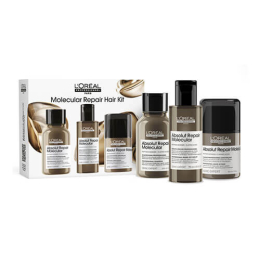Dans un univers où le streaming s’impose comme la norme pour la consommation de films et séries, la plateforme cpasmal.fr se distingue en 2025 comme un acteur incontournable. Alliant accessibilité, diversité des contenus et innovations ergonomiques, ce site reflète les nouvelles attentes des spectateurs contemporains. Loin d’être une simple bibliothèque vidéo, cpasmal.fr incarne un lieu où se croisent les offres des plus grands services de streaming tels que Netflix, Amazon Prime Video, Disney+, Canal+ Séries, OCS, Salto, Molotov, Apple TV+ ou encore myCanal. Il offre ainsi un panorama riche et cohérent, exempt de lourdeurs d’abonnement multiples, et sans contrainte liée à un VPN.
À l’heure où la multiplication des plateformes peut parfois égarer l’utilisateur, cpasmal.fr facilite l’exploration des nouveautés grâce à une interface épurée et intuitive. Le site propose également une sélection rigoureuse, évitant la saturation de contenus inutiles, pour mieux mettre en lumière les productions de qualité, y compris celles qui sortent des sentiers battus. Son rôle dépasse donc celui d’un simple diffuseur : il devient un guide dans l’immense jungle des offres vidéos, un laboratoire d’innovation pour une expérience de visionnage fluide et largement accessible.
Panorama du streaming en 2025 : cpasmal.fr face à une concurrence dynamique et des enjeux de durabilité
Le marché du streaming en 2025 est un paysage mouvant où les géants mondiaux tels que Netflix, Amazon Prime Video, et Disney+ continuent d’étendre leurs catalogues avec des investissements massifs. Pourtant, la saturation des abonnements pousse les consommateurs à chercher un accès plus simple et unifié à leurs contenus préférés. C’est précisément là que cpasmal.fr intervient, en proposant une expérience centralisée, gratuite et légale, rassemblant divers contenus issus de plateformes majeures et services spécialisés comme Canal+ Séries, Salto, OCS, ou encore Molotov.
La pertinence de cpasmal.fr repose sur sa capacité à respecter les droits d’auteur tout en offrant un catalogue équilibré entre exclusivités et productions de niche. La durabilité de ce modèle s’appuie sur des partenariats solides ainsi qu’une gestion agile des droits géographiques qui garantissent aux utilisateurs un accès pérenne aux contenus. Cette démarche pragmatique évite les ruptures de disponibilité intempestives, ce qui est l’une des plaintes majeures des amateurs de streaming.
Parmi les défis relevés par la plateforme, on distingue :
- Le respect strict des accords de licences régionaux, garantissant une diffusion légale.
- La gestion d’une offre diverse mêlant grands blockbusters et œuvres indépendantes.
- L’adaptation continue aux évolutions technologiques et attentes des spectateurs.
| Acteur | Rôle sur cpasmal.fr | Type de contenu | Particularité |
|---|---|---|---|
| Netflix | Fournisseur de titres exclusifs et originaux | Films, séries, documentaires | Forte reconnaissance mondiale |
| Amazon Prime Video | Catalogue diversifié et contenus croisés | Films et séries internationaux | Intégration multi-genres |
| Disney+ | Expériences familiales et franchises iconiques | Films d’animation, sagas, séries | Contenus intergénérationnels |
| Canal+ Séries | Accès à des productions premium françaises | Séries dramatiques et thrillers | Accent sur la qualité éditoriale |
| Salto | Soutien aux productions françaises et européennes | Séries, films contemporains | Focus régional |
| OCS | Programmes ciblés cinéma et séries | Films récents, séries exclusives | Partenaire de confiance |
| Molotov | Accès à la télévision linéaire et contenus à la demande | Films, émissions, documentaires | Interface multi-écrans |
| Apple TV+ | Contenus originaux et productions premium | Séries, films artistiques | Approche qualitative et innovante |
| myCanal | Hub des chaînes Canal+ au sein de l’écosystème | Chaînes en direct, replay | Expérience utilisateur enrichie |
Cette panorama souligne la capacité de cpasmal.fr à naviguer entre les différentes licences pour proposer une plateforme cohérente et fluide.

Design et esthétiques des interfaces : comment cpasmal.fr façonne une expérience visuelle unique en streaming
L’identité graphique de cpasmal.fr s’inscrit dans les tendances contemporaines du design numérique, mêlant sobriété et dynamisme pour accompagner une navigation fluide. La plateforme privilégie une palette de couleurs adaptées au confort visuel, notamment via des modes clairs et obscurs qui conviennent aux différents moments de visionnage. Ce soin porté à l’esthétique permet de limiter la fatigue oculaire lors d’une utilisation prolongée.
Le site organise ses contenus à travers des grilles modulaires, offrant à la fois une vision d’ensemble et des détails précis grâce à des vignettes soignées et des micro-descriptions décryptant les thématiques. Cette organisation facilite la découverte, qu’il s’agisse de nouveautés sur Netflix ou de séries exclusives sur Apple TV+.
Par ailleurs, de nombreuses micro-interactions favorisent une immersion progressive : les effets de survol apportent une rétroaction visuelle immédiate, tandis que les carrousels dynamiques narrent une histoire sans saturer l’écran. Ainsi, les utilisateurs ressentent un équilibre harmonieux entre esthétique et ergonomie.
- Palette de couleurs : tons doux et contrastés pour une lisibilité optimale
- Typographie : claire et accessible sur tous supports, avec une hiérarchie visible
- Icônes et micro-interactions : pour guider et enrichir l’expérience utilisateur
- Vignettes : images sélectionnées pour susciter la curiosité sans surcharger
| Élément visuel | Fonction | Impact utilisateur |
|---|---|---|
| Mode sombre | Réduit la fatigue oculaire lors de visionnages prolongés | Confort accru et prolongation de la session |
| Grilles modulaires | Organisation claire des contenus | Facilite la découverte et la navigation |
| Carrousels dynamiques | Présentation attractive des nouveautés | Motivation à explorer davantage |
| Micro-descriptions | Informations synthétiques sur les contenus | Meilleure compréhension et choix éclairé |
Parmi les exemples concrets, cpasmal.fr déploie une approche adaptée aux petits écrans mobiles tout autant qu’aux grands écrans de télévision connectée, témoignant du souci d’accessibilité universelle. Le design invite à une consultation agréable, sans surcharge et avec des interactions pensées pour l’humain plutôt que pour le simple affichage esthétique.
Architecture technique et qualité de streaming : les secrets d’une diffusion fluide sur cpasmal.fr
La performance technique est un pilier fondamental de cpasmal.fr. L’architecture repose sur une diffusion adaptative utilisant notamment des protocoles comme le DASH et le HLS, permettant d’adapter la qualité vidéo en temps réel selon la bande passante disponible. Cela garantit un visionnage sans interruption, même avec une connexion instable.
Un autre aspect clé est l’API robuste qui orchestre la gestion des contenus, des droits et des recommandations. Celle-ci s’accompagne d’une interface utilisateur réactive et rapide, optimisée pour réduire le temps de chargement et limiter les taux de rebonds, créant ainsi un parcours agréable et continu.
La plateforme mise également sur l’accessibilité, proposant des sous-titrages multilingues et des options audio description, ce qui élargit son public et s’inscrit dans une démarche inclusive. Ces options répondent clairement aux attentes d’un public international et diversifié.
- Diffusion adaptative : qualité d’image ajustable instantanément
- API performante : gestion rapide et fiable des ressources
- Accessibilité : sous-titres et audio-description pour tous
- Optimisation multi-appareils : expérience homogène PC, mobile, TV connectée
| Fonction technique | Description | Bénéfices pour l’utilisateur |
|---|---|---|
| Protocoles DASH/HLS | Streaming vidéo adaptatif en temps réel | Visionnage fluide, sans buffering |
| API orchestratrice | Gestion centralisée des droits et contenus | Navigation rapide, recommandations pertinentes |
| Options d’accessibilité | Sous-titrage et audio-description multilingues | Inclusion d’un public plus large |
| Multi-plateforme | Compatibilité avec les principaux appareils | Expérience homogène sur tous écrans |
Ces caractéristiques techniques ne sont pas de simples atouts, mais des leviers essentiels pour fidéliser les utilisateurs dans un environnement où la patience est devenue une denrée rare. Le pari de cpasmal.fr est de transcender les frontières habituelles du streaming classique par la stabilité et la qualité.

Des catalogues riches et des partenariats stratégiques : comment cpasmal.fr fédère les grandes plateformes de streaming
Conçu pour offrir une diversité de contenus, cpasmal.fr tire parti de collaborations approfondies avec des acteurs majeurs et spécialisés afin de proposer un accès élargi. En intégrant des flux provenant de services tels que Netflix, Amazon Prime Video, Disney+, mais aussi Canal+ Séries, Salto, OCS, Apple TV+ ou encore myCanal, la plateforme ouvre un horizon varié.
La gestion de ces partenariats repose sur la transparence des droits et des accords régionaux, offrant une information claire sur la disponibilité locale des contenus. Ainsi, l’utilisateur est guidé intuitivement sur ce qui est accessible ou non dans sa zone géographique, évitant toute frustration liée aux restrictions invisibles. Cette rigueur administrative est un fondement de la confiance accordée à la plateforme.
Une autre dimension stratégique concerne la mise en avant d’exclusivités et de productions originales, allant au-delà des simples catalogues connus, contribuant à renouveler sans cesse l’attrait pour le site. Ce choix éditorial témoigne de la volonté de cpasmal.fr de ne pas être qu’un simple relai, mais un acteur de la découverte culturelle.
- Partenariats multiples : intégration de catalogues variés.
- Transparence sur les droits : indicateurs clairs sur la disponibilité.
- Contenus exclusifs : offres originales pour fidéliser les visiteurs.
- Adaptation régionale : accès personnalisé en fonction de la localisation.
| Plateforme partenaire | Nature du contenu | Avantage utilisateur |
|---|---|---|
| Netflix | Originals et blockbusters | Titres majeurs et exclusifs |
| Amazon Prime Video | Catalogue international | Diversité et nouveautés |
| Disney+ | Franchises familiales | Contenus adaptés à tous âges |
| Canal+ Séries | Production premium française | Qualité et reconnaissance |
| Salto | Séries européennes | Focus local et diversité |
| OCS | Séries récentes et films | Exclusivités et nouveautés |
| Apple TV+ | Contenus originaux haut de gamme | Approche artistique |
| myCanal | Chaînes en direct et replay | Grande flexibilité d’accès |
L’intégration de ces catalogues s’accompagne d’outils dynamiques de recommandation, qui guident les utilisateurs de cpasmal.fr vers des choix pertinents, sans les submerger. Cette expérience personnalisée valorise la découverte cohérente, un élément essentiel dans la fidélisation à long terme.
L’impact culturel et communautaire : comment cpasmal.fr influence les modes de consommation et le langage du web
Le lancement de cpasmal.fr marque aussi un virage socioculturel dans la façon dont les communautés en ligne appréhendent le visionnage collectif et individuel. La plateforme ne se limite pas à offrir des vidéos mais favorise les échanges, le partage d’expériences et la formation d’identités numériques autour des contenus proposés.
Un des aspects marquants est la manière dont les fans se regroupent autour de séries, films ou genres spécifiques, utilisant un langage riche en références, émojis et memes, qui traduit à la fois leur enthousiasme et leur appartenance à un groupe. Les réseaux sociaux se parent de discussions actives directement inspirées des nouveautés accessibles via cpasmal.fr, qui par ce canal contribue à créer un sentiment de proximité entre créateurs et spectateurs.
De plus, l’adaptation linguistique et éditoriale du site reflète une volonté d’inclusion, en offrant des options multiples selon les zones géographiques et les langues parlées, ce qui favorise un dialogue culturel vibrant à l’échelle globale mais aussi locale. Ce mélange d’univers nourrit un échange créatif, où la pratique du streaming dépasse le simple consommation pour devenir une expérience sociale et culturelle vivante.
- Communautés engagées : groupes de fans et partages sur les réseaux sociaux.
- Langage numérique : émoticônes, memes, et termes spécifiques développés.
- Accessibilité multilingue : adaptation des contenus et interface.
- Pratiques culturelles : visionnage collectif et évènements en ligne.
| Dimension socioculturelle | Impact | Illustration |
|---|---|---|
| Création d’identité numérique | Renforcement du sentiment d’appartenance | Communautés autour d’œuvres cultes |
| Langage web spécifique | Communication enrichie et rapide | Utilisation intensive d’émojis et memes |
| Dialogue global-local | Mixité culturelle et échanges | Adaptations linguistiques et régionales |
| Visionnage social | Expérience partagée et événements | Sessions synchronisées et commentaires en direct |
Ce phénomène culturel montre que cpasmal.fr ne se contente pas de livrer un catalogue, mais participe activement à forger un espace d’échanges où le streaming devient un acte collectif, enrichi de langage et d’émotions partagées.
Cpasmal est-il accessible dans tous les pays ?
L’accès dépend des accords de droits régionaux et des paramètres géographiques du compte utilisateur. La plateforme peut proposer des contenus avec des variantes selon la localisation, et afficher des indications claires quand certains éléments ne sont pas disponibles dans une région donnée.
Quels partenariats définissent le catalogue ?
Le site collabore avec des acteurs globaux et régionaux (par exemple Netflix, Prime Video, Disney+, Canal+ Séries, Salto, OCS, Apple TV+, myCanal, Molotov) pour offrir un éventail équilibré entre contenus premium et titres de niche, tout en restant transparent sur les droits et les exclusions.
Comment mesurer l’expérience utilisateur sur le nouveau site ?
Les indicateurs clés incluent le temps de chargement, le taux de satisfaction, la rétention par session et les parcours de navigation; des retours communautaires et des tests A/B éclairent les choix d’interface et les améliorations futures.
Y a-t-il des contenus originaux ou exclusifs sur Cpasmal ?
La plateforme peut proposer des contenus originaux ou des accords exclusifs au-delà des catalogues principaux, afin d’offrir des raisons supplémentaires de revenir et de découvrir des propositions uniques.
Comment suivre les mises à jour et les nouveaux contenus ?
Les lecteurs peuvent s’abonner aux flux d’actualités et consulter les pages dédiées aux partenariats et aux nouveautés, qui détaillent les ajouts récents et les contenus à venir.
